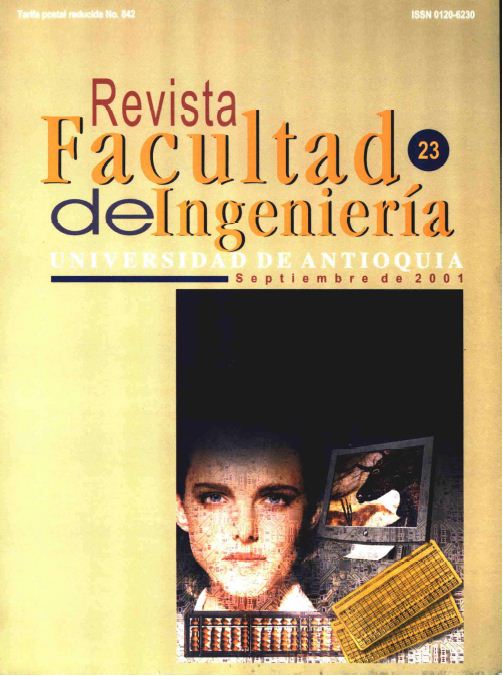El antiguo Ferrocarril de Cúcuta
DOI:
https://doi.org/10.17533/udea.redin.326320Palabras clave:
Colombia-railways, Cúcuta, Engineering-History.Resumen
Este informe presenta los orígenes, la construcción y la operación del antiguo ferrocarril que unió la ciudad de Cúcuta con el Lago de Maracaibo, y por esa vía, con el Mar Caribe. Se señalan las razones que hubo para construirlo, para extenderlo y finalmente para levantar esa carrilera. Este documento es un producto obtenido en el largo estudio que el autor ha estado haciendo sobre la historia de la ingeniería en Colombia, es una pieza de ella que hoy está casi olvidada.
Descargas
Citas
Bateman, Alfredo. Ferrocarriles Nacionales de Colombia. Bogotá. Ferrocarriles Nacionales. 1977.
Bateman, Alfredo. Páginas para la Historia de la Ingeniería Colombiana. Bogotá. Editorial Kelly. 1972.
Colombia. Gobierno. Contraloría General de la República. Síntesis Estadística de Colombia 1939-/943. 1944.
Díaz Lemos, Ángel H. Compendio de Geografia de la República de Colombia (Sudamérica). Barcelona. Henrich y Cía. en comandita. 1895.
Me. Greevey, William Paul. An Economic History of Colombia 1845-1930. Cambridge. The University Press. 1971.
Monsalve, Diego. Colombia Cafetera. Barcelona. Editorial Artes Gráficas. 1929.
Ortega, Alfredo. Ferrocarriles Colombianos. Resumen Histórico. Bogotá. Academia (Colombiana) de Historia. Imprenta Nacional. 1920.
Poveda Ramos, Gabriel. Antioquia y el Ferrocarril de Antioquia. Medellín. Gráficas Vallejo. 1974.
Descargas
Publicado
Cómo citar
Número
Sección
Licencia
Los artículos disponibles en la Revista Facultad de Ingeniería, Universidad de Antioquia están bajo la licencia Creative Commons Attribution BY-NC-SA 4.0.
Eres libre de:
Compartir — copiar y redistribuir el material en cualquier medio o formato
Adaptar : remezclar, transformar y construir sobre el material.
Bajo los siguientes términos:
Reconocimiento : debe otorgar el crédito correspondiente , proporcionar un enlace a la licencia e indicar si se realizaron cambios . Puede hacerlo de cualquier manera razonable, pero no de ninguna manera que sugiera que el licenciante lo respalda a usted o su uso.
No comercial : no puede utilizar el material con fines comerciales .
Compartir igual : si remezcla, transforma o construye a partir del material, debe distribuir sus contribuciones bajo la misma licencia que el original.
El material publicado por la revista puede ser distribuido, copiado y exhibido por terceros si se dan los respectivos créditos a la revista, sin ningún costo. No se puede obtener ningún beneficio comercial y las obras derivadas tienen que estar bajo los mismos términos de licencia que el trabajo original.










 Twitter
Twitter